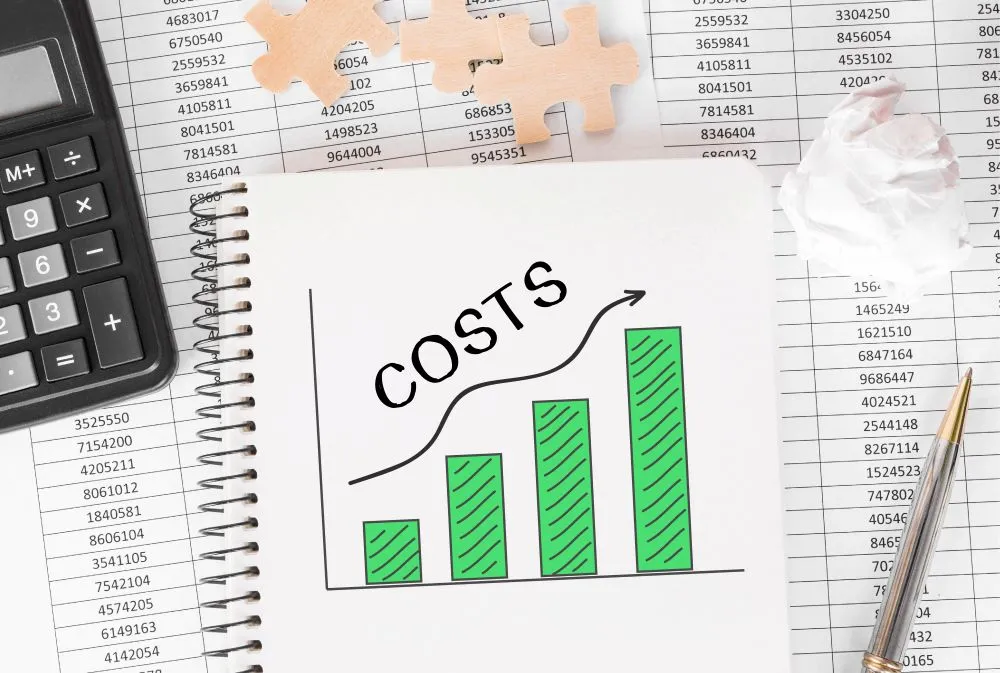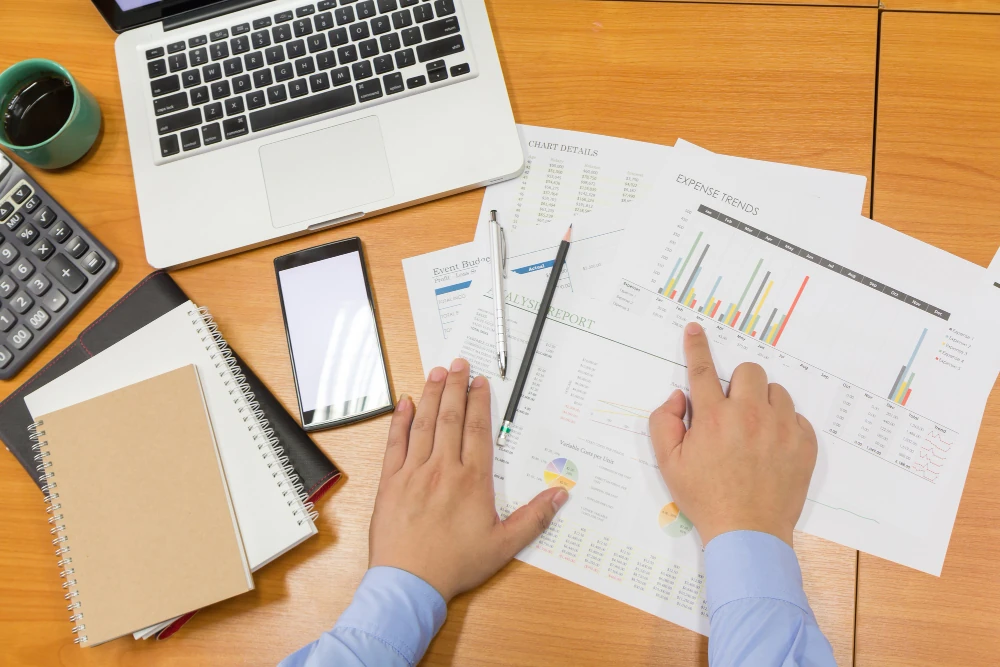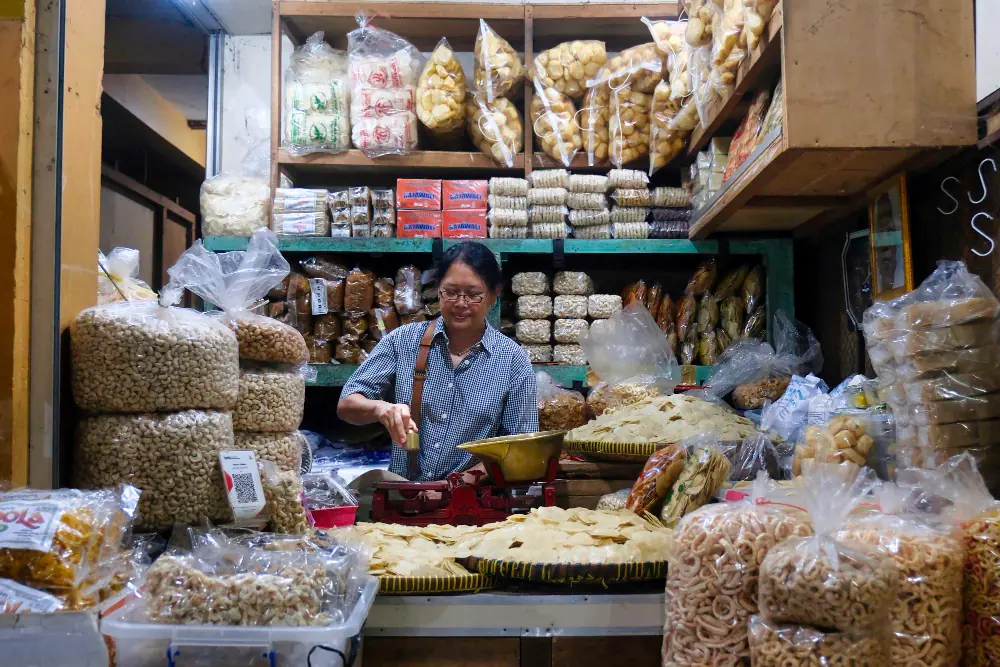Production costs are one of the important business expenses specifically used to make products. Calculating production costs correctly can help you determine the profit targets that must be achieved and reduce the risk of losses.
Apart from that, allocating production costs can also help manage company finances effectively and measurably.
So, if you want to know complete information about production costs, then you can read the following review.
1. Definition of Production Costs
Production costs are the accumulated expenses that a company needs to process raw materials into a product that is ready to be marketed. The process of calculating production costs starts from the beginning of processing until it becomes semi-finished goods or finished goods.
The scope of production costs contains 3 main categories, namely raw materials, direct labor and factory overhead. All costs will be borne by the company from the processing process until the goods are ready to be sold on the market. Then, the costs begin to be calculated per unit of product so that it is easy to calculate and make profits.
1.1 Objectives of Determining Production Costs
Generally, the aim of determining production costs is to maximize business profits. Companies can calculate how much income they can earn, then compare it with expenses.
Apart from that, there are several other purposes for determining production costs, namely:
- Collect and record all transaction evidence related to costs incurred
- Control costs for the production process
- Helps make short-term decisions, for example purchasing raw materials, tools, and determining the selling price of finished products.
By knowing production costs in detail, management is able to make the right decisions to determine selling prices and minimize risks related to the product production process.
2. Types of Production Costs
There are 7 types of production costs that you must understand, namely:
2.1 Fixed Costs
Fixed costs are costs that a company incurs regularly (periodically) and do not depend on whether the production process is ongoing or not.
Typically, fixed costs relate to company assets that are important for long-term needs.
Examples of fixed costs are building costs, taxes, electricity, administration, water and others.
2.2 Variable Costs
Variable costs or non-fixed costs are costs whose expenses depend on the amount of production. The more products a company produces, the greater the costs incurred.
The amount of variable costs usually depends on market conditions at that time. For example, when market demand for the goods or products you sell increases, the variable costs you have to pay will also increase.
Some examples of variable costs include employee salaries, distribution costs, marketing and main raw materials.
2.3 Semi-variable Costs
Semi-variable costs are costs that have fixed and variable components. Typically, these costs will change as the level of production activity changes, but not proportionally.
Semi-variable cost sources consist of fixed components (permanent employee salaries, machine depreciation and building rental costs), as well as variable components (raw material costs, utility costs and employee overtime).
An example of semi-variable costs, namely the higher the number of products produced, the more employees work overtime and this causes overtime costs to increase.
2.4 Marginal Cost (Marginal Cost)
Marginal cost is additional expenditure every time there is an additional unit of production. Even though marginal costs are almost similar to variable costs, the two have differences in terms of expenditure time.
Variable costs are incurred when the need arises to increase the scale of routine production. Meanwhile, marginal costs are incurred for the purpose of business expansion.
Examples of marginal costs are the costs of purchasing new production machines, building a new factory and opening a business branch.
2.5 Average Cost (Average Cost)
Average cost is the average value of production costs in each period. To determine average costs, you can calculate the total production costs, then divide by the number of items that have been made.
Determining average cost is very important because it can be the basis for determining the selling price of a product. Therefore, business owners must be able to determine average costs carefully.
If product prices are only determined by fixed costs or variable costs, then you will experience losses. The problem is, there are cost components that are missing from the calculation.
One example of average cost, namely if the total cost you get in 1 month is IDR 500 million and production activities produce up to 500 pieces, then the average cost value you get from dividing the two is IDR 1 million.
2.6 Sunk Costs
Sunk costs are costs that you have incurred and cannot be recovered. Sunk costs have no relevance to the future because they do not change.
The sources of sunk costs come from asset purchase costs, research and development, and advertising costs.
An example of sunk costs, namely when placing an advertisement in the mass media and an advertisement is not read, you cannot recover the costs.
2.7 Opportunity Cost (Opportunity Cost)
Finally, opportunity cost is the potential for lost profits due to choosing one alternative and ignoring other alternatives. Opportunity costs are not always expenditures in the form of money, but also in the form of energy, time and opportunities.
Examples of opportunity costs include an entrepreneur choosing to open a new shop rather than investing in shares, students choosing to watch films instead of studying, and employees choosing to work overtime instead of hanging out with their families.
3. 3 Categories of Production Costs
There are 3 categories of production costs that you must understand, namely:
3.1 Raw Material Costs (Direct Material Costs)
Direct material costs or raw material costs are the costs incurred to purchase and process raw materials into ready goods. Generally, the costs for these raw materials are directly related to the goods to be produced and the nominal amounts that appear are easy to trace.
3.2 Direct Labor Costs
Direct labor costs are costs incurred to pay workers. These costs are also often referred to as wages, allowances and insurance and are paid directly to employees involved in the process of producing goods or services.
3.3 Factory Overhead Costs
Lastly, there are factory overhead costs which the company incurs to support a smooth production process. Overhead costs are not directly related to the production process, but can help run the production itself.
Examples of factory overhead costs consist of building and land rental costs, factory utilities and machine depreciation.
4. Factors that Influence Production Costs
Apart from knowing the category, you also need to know what factors influence production costs, let's check the review below.
4.1 Request
The first factor that can influence production costs is demand. When demand increases, production costs will become higher because companies have to compete with competitors to get raw materials, labor and other resources.
However, when demand is falling, production costs will be much lower because companies can negotiate lower prices for raw goods with suppliers and reduce expenditure on labor.
4.2 Raw Material Prices
If raw material prices rise, production costs will increase directly. However, if the price falls, production costs will be lower and profits will be able to increase.
4.3 Labor Wages
The next factor that influences production costs is labor wages. Usually, in developed countries, labor wages will be higher and increase production costs. Meanwhile in developing countries, labor wages tend to be low, thereby reducing production costs.
4.4 Factory Overhead Costs
Several factory overhead costs will increase overall production costs, namely rent, electricity, water and maintenance costs. If you are able to increase product efficiency, overhead costs can decrease and increase business profits.
4.5 Technology
Using new technology can indeed increase production costs, but it can reduce costs if you use it for the long term by increasing efficiency and quality. This is certainly different from old technology which tends to reduce costs, but is less efficient in producing quality products.
4.6 Production Scale
Production scale is also a factor that influences production costs. By carrying out mass production, the costs of purchasing raw materials tend to be lower than carrying out small production because you cannot take advantage of the advantages of the production scale itself.
4.7 Economic Conditions
It turns out that economic conditions can also be a factor that influences the size of production costs.
When inflation occurs, production costs will increase further because the prices of raw materials, labor and other overheads increase. Meanwhile, when deflation occurs, costs tend to decrease because the prices of raw materials, labor and overheads fall.
4.8 Government Policy
High taxes can increase nominal production costs and reduce the profits you will make. However, if you have subsidies or incentives, costs will be reduced and the company's competitiveness will increase.
4.9 Location
The last factor that influences production costs is location. If your company is located quite far away and is not strategic, then production costs will increase due to the high use of transportation, logistics and living costs.
Meanwhile, if the business location is strategic or close to the market, transportation costs, logistics and living costs will decrease. In fact, it can increase competitiveness optimally.
5. Example of Production Costs
Before knowing examples of production costs, you must first know the formulation or formula used to calculate them, namely:
Production costs = direct material costs + direct labor costs + indirect labor costs + factory overhead costs
The following are examples of production costs in financial reports:
5.1 Example 1
Company XYZ is a company engaged in manufacturing and selling furniture products.
In 1 month, this company succeeded in producing 500 units of cupboards with the cost details as follows:
- IDR 10,000,000 to buy wood raw materials
- IDR 4,500,000 carpenter's wages and IDR 2,000,000 security wages for guarding the cabinet work process
- IDR 3,000,000 building rental fees and other utilities.
The total costs incurred are IDR 10,000,000 + IDR 4,500,000 + IDR 2,000,000 + IDR 3,000,000 = IDR 19,500,000
So, the production costs that must be incurred to make one unit of cupboard are IDR 19,500,000 divided by 500 units = IDR 39,000.
5.2 Example 2
ABC Company is engaged in the electronic equipment business and is calculating the production costs per TV unit from total production for 1 month.
Direct material costs incurred amounted to IDR 15 billion, direct labor costs amounted to IDR 150 million and factory overhead costs IDR 100 million.
The number of goods successfully produced was 7,000 units. So, how much does it cost to produce a TV per unit?
Formula:
TV production costs per unit = (direct material costs + direct labor costs + factory overhead costs): number of units produced
TV production costs per unit = (Rp. 15,000,000,000 + Rp. 150,000,000 + Rp. 100,000,000) : 7,000
= IDR 15,250,000,000 : 7,000
= IDR 2,178,571
So, the total production costs for the month concerned were IDR 15,250,000,000. If calculated per unit, the production cost is IDR 2,178,571
If ABC company sells TVs per unit for Rp. 2,500,000, then the profit will be Rp. 321,429.
6. How to Calculate Production Costs
Here are several easy ways to calculate production costs, namely:
6.1 Determine the Use of Production Cost Types
The first way to calculate production costs is to first determine the type of cost. You can choose one type of production cost according to the financial condition of each company. Choose what is suitable and allows costs not to exceed your financial limits.
6.2 Arrange and Total Purchase of Raw Materials
If you have determined the right type of production costs, then start making a list of purchased raw materials and their prices per unit. Then, add up all the purchase prices or use a formula like this:
Initial remaining raw materials + cost of purchasing raw materials - final remaining raw materials = cost of raw materials used.
6.3 Break Down and Total HR Costs
Next, you can make a calculation regarding the details of the number of workers, their positions and the amount of wages they are given. Add up all the wages of the workers, then the final result is the labor costs which you can use in calculating production costs.
6.4 Make Overhead Cost Calculations
You need to remember that the overhead costs for each production can vary. Therefore, make sure to always record all overhead expenses in detail, both quantity and price. Then, start making calculations of all overhead costs.
6.5 Add up all expenses
Now, all the total costs of each category are known. Next, you can start calculating production costs by adding up all variable or fixed costs. Use the production cost formula explained previously, namely adding up the total costs of raw materials, labor and overhead costs.
6.6 Start Setting Price Per Product Unit
Finally, you can divide the total final production costs by the quantity or number of products made. As a result, you will know the production size for each product. Now, it's time to start setting the price per unit of product that you will sell to the market and make sure that each product provides a profit for the company.
This is information about production costs that you can read in full. You must be able to calculate and understand it carefully so that it is useful for managing costs and increasing business profits.
---
If you need additional business capital to finance production and business operational costs, you can apply for financing at BFI Finance. With a BPKB car, motorbike or house certificate guarantee, you have the opportunity to get cash disbursement of up to 85% of the vehicle value and competitive interest rates. BFI Finance is officially licensed and supervised by the OJK and has served more than 2 million customers throughout Indonesia, so there is no need to worry about applying for financing at BFI Finance.







